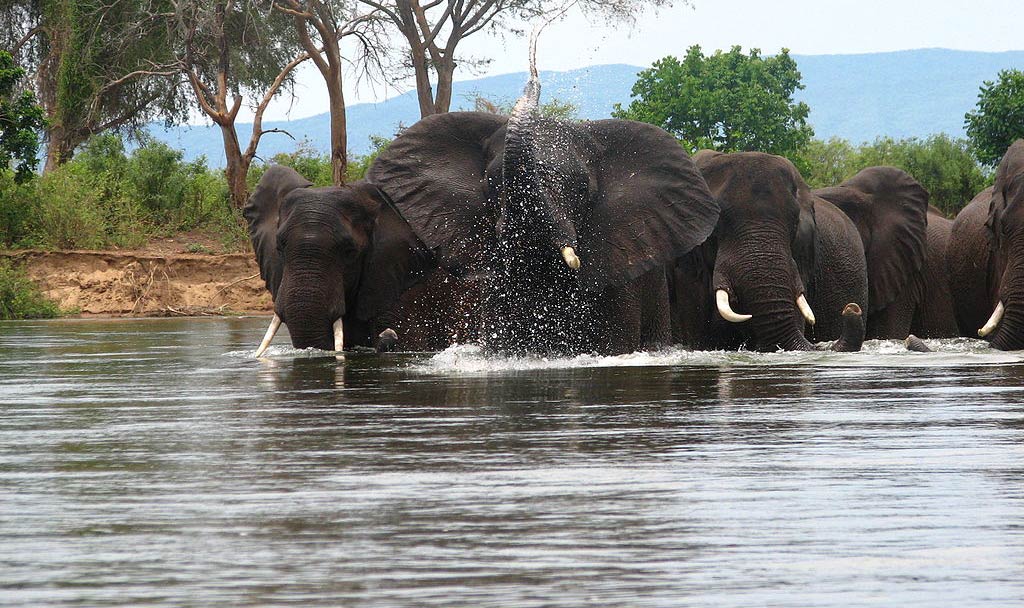Technically, Zambia has all the Big Five, but rhinos are extremely rare and confined to the Mosi-oa-Tunya (Victoria Falls) and North Luangwa National Parks. Elephants, buffalo, and lions are common across multiple parks; however, Kafue, South Luangwa, and the Lower Zambezi are all well-known for leopards.
Look beyond the Big Five, and you’ll find Zambia full of fascinating rare and endemic species such as Black lechwe, Crawshay’s zebra, and Thornicroft’s giraffe. Liuwa Plain National Park hosts Africa’s second-largest wildebeest migration in November each year, and Kasanka National Park’s 10 million fruit bats take to the skies from October to December.
Zambia is one of the wettest countries in southern Africa, and the rivers and lakes offer excellent fishing alongside thriving populations of hippos and crocodiles. The Zambezi River is famous for its tigerfish, and numerous fishing lodges can be found throughout its length.
May to October is the best time for wildlife viewing when the weather is drier, and the vegetation is at its thinnest. This makes the animals easier to spot, and the lower winter temperatures are also more pleasant.
By mid-October, however, it’s already getting scorching, and when the rains arrive in November, they can make the roads in the more isolated regions completely impassable. For this reason, many camps close their operations completely between December and March, with April, May, and November considered the lower-rate shoulder season.










 Copy Link
Copy Link
 Share on LinkedIn
Share on LinkedIn
 Share on Facebook
Share on Facebook











